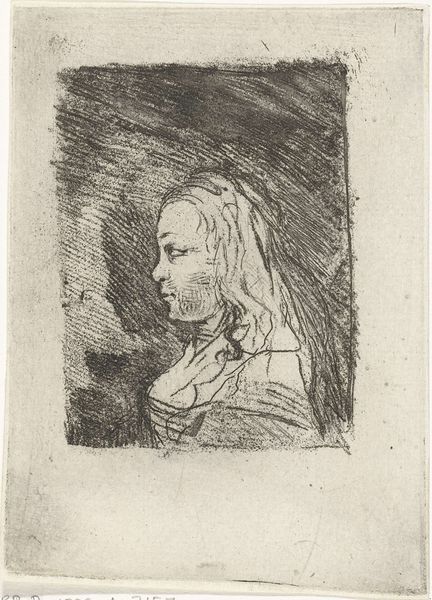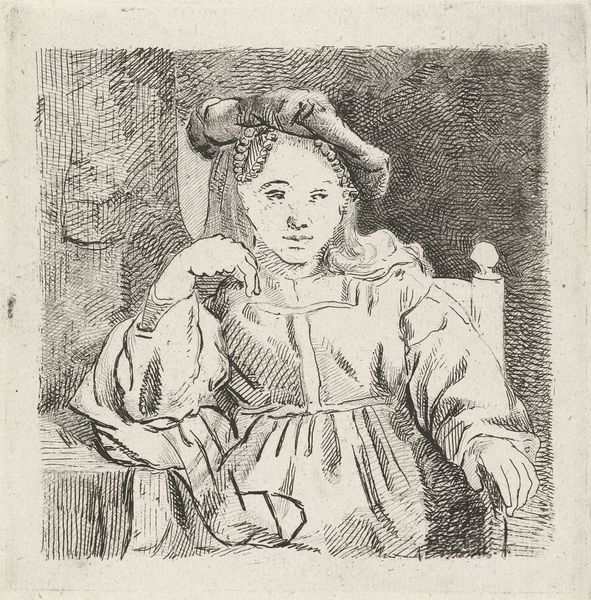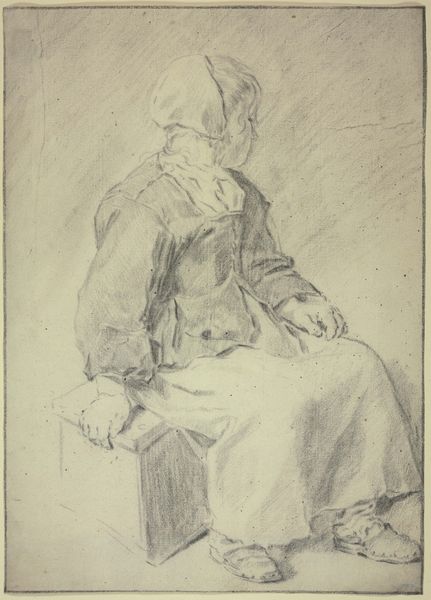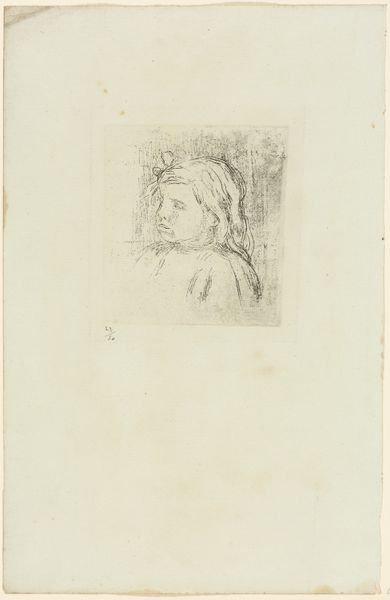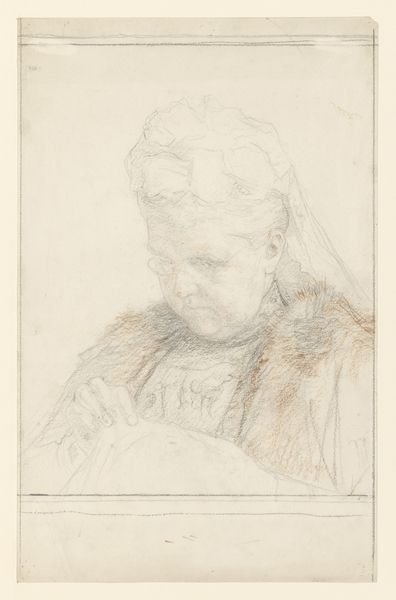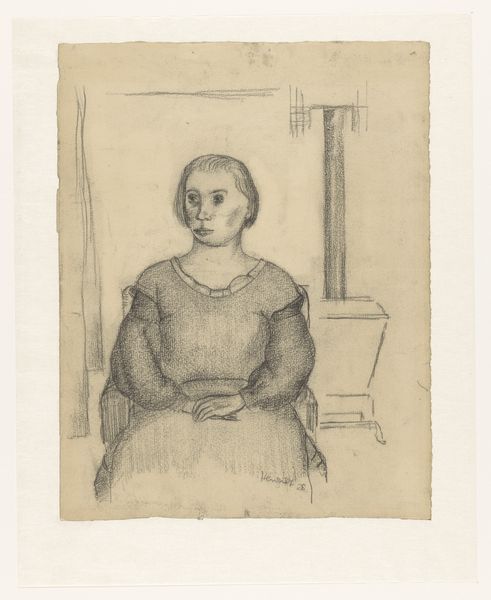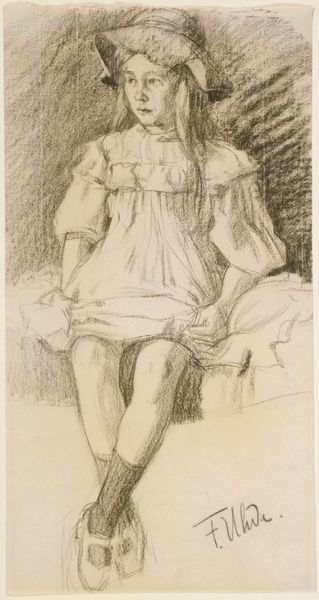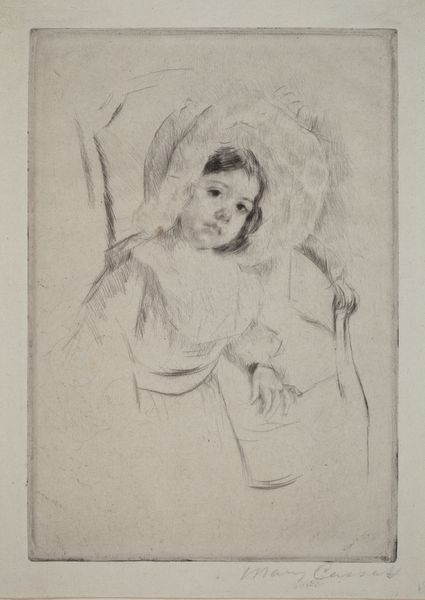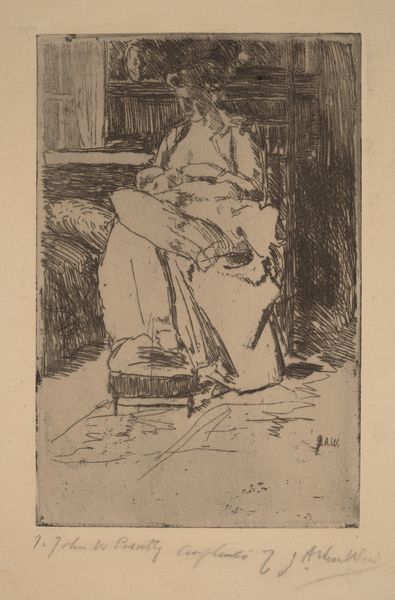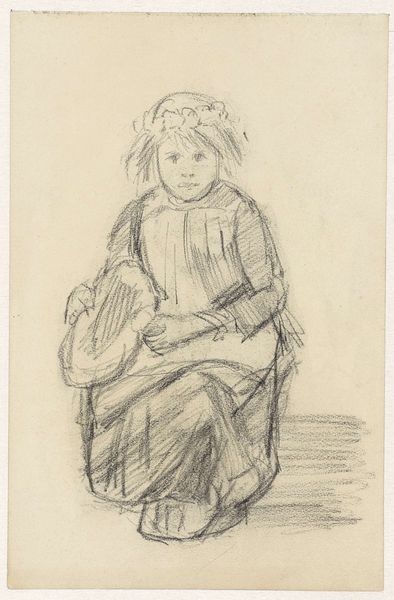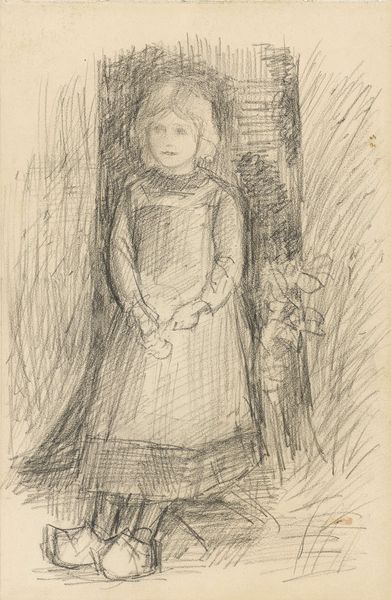
drawing, print, etching
#
portrait
#
drawing
# print
#
impressionism
#
etching
#
pencil drawing
Dimensions: plate: 6 11/16 x 4 3/4 in. (17 x 12 cm) sheet: 7 1/16 x 5 7/8 in. (18 x 15 cm)
Copyright: Public Domain
Curator: Take a moment here to consider Degas' "The Infanta Margarita, after Velázquez," created between 1856 and 1866. This piece is an etching, a print, residing here with us at The Met. What is your first thought when you see it? Editor: It feels like a ghost of a painting. Light, fragile, like a memory barely there. A far cry from the pomp and circumstance usually attached to royal portraits. Curator: Precisely! That “ghostliness” comes partly from Degas’ printmaking technique but also, I believe, from his intention. Velázquez, of course, was painting the apex of power, while Degas is filtering that through his own, more modern, sensibility. We glimpse not just a princess but childhood itself, vulnerable and perhaps a little lonely. Editor: I see that. It's fascinating how the act of reproduction shifts the symbolic weight. The original Velázquez screams power, every detail reinforcing dynastic strength. Here, all that’s distilled down to a single, fleeting impression. The dark, swirling lines of the dress contrast with her ethereal face. I wonder, is Degas stripping away the layers of representation to find some truth underneath? Curator: Perhaps the “truth” he was after was artistic rather than strictly representational. He returned to this image again and again, experimenting. Copying the old masters was a key part of his process—he almost seems to be in dialogue with Velázquez. And you see hints of his future dancers in the subject's delicate stance, the emphasis on the structure beneath the fabric. Editor: Right, it’s like he’s deconstructing the idea of the royal portrait. The heavy costume becomes almost abstract in his interpretation, and all attention focuses on her face and the question of what her fate will be. Symbols are inverted, in a way. What was once a declaration of lineage becomes an almost unsettling question mark hanging over this girl. Curator: Exactly. The etching gives us a softer edge, and that feels very Degas. It is less a picture of power and more about being observant and sensitive to human fragility, if that makes sense? Editor: It does. A powerful lesson on how images speak and transform across time, always shifting meanings. This seemingly quiet work manages to shout rather loudly about the relationship between past, present and the future, or more precisely, someone else's version of the present. Curator: I find myself pondering Degas' fascination, his artistic engagement. Thank you for reminding us how interpretations shape legacy!
Comments
No comments
Be the first to comment and join the conversation on the ultimate creative platform.
